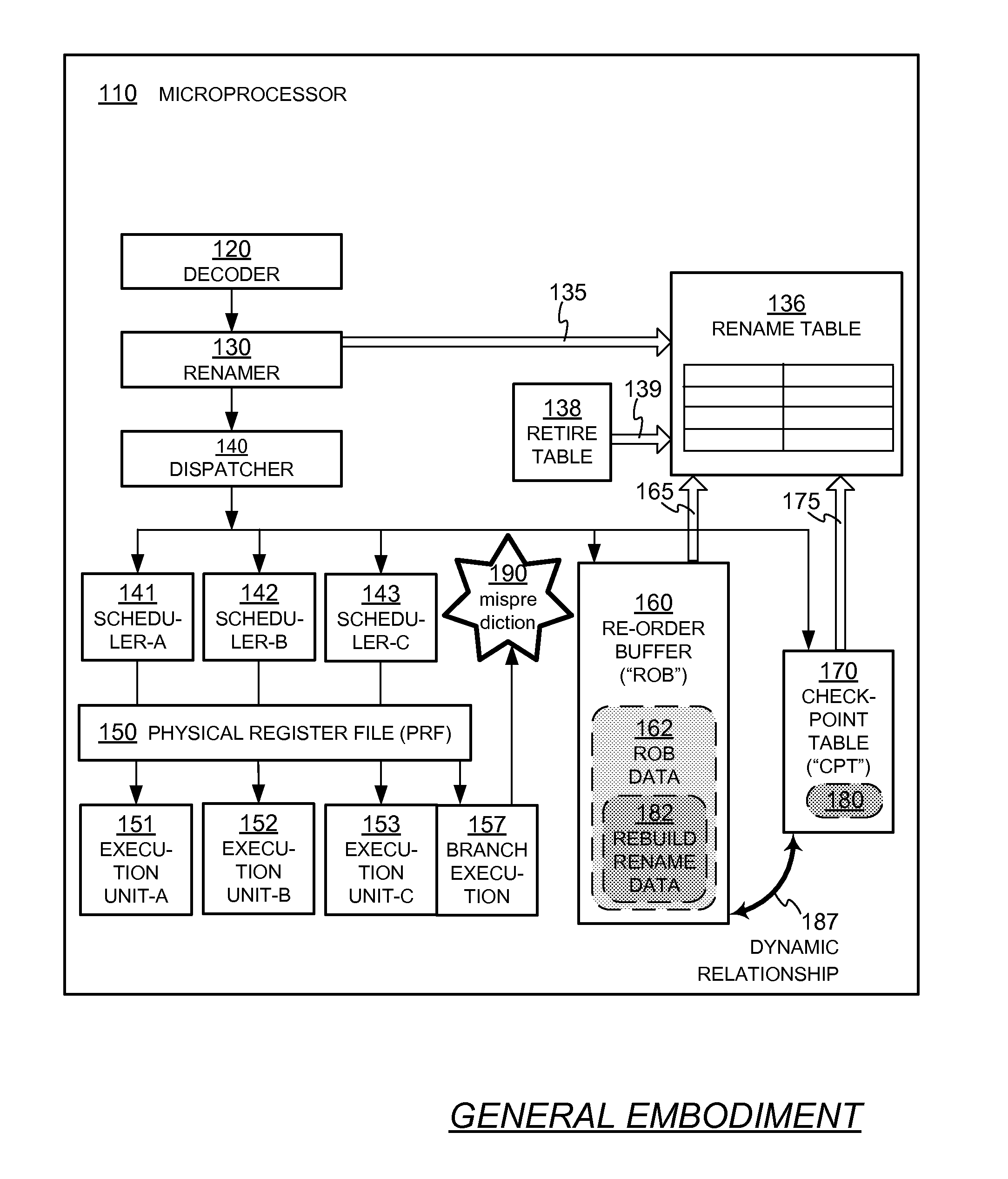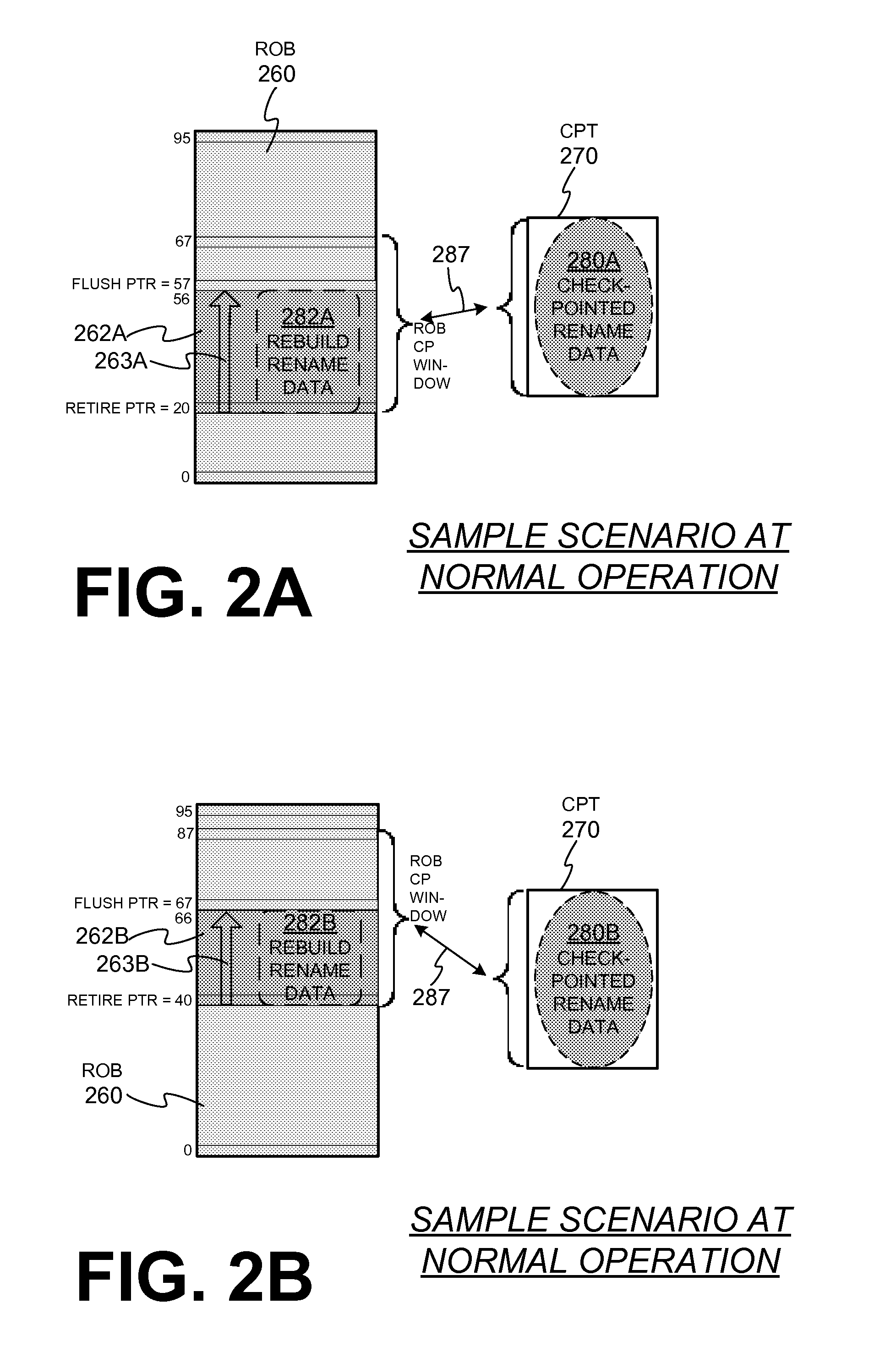Reorder-buffer-based dynamic checkpointing for rename table rebuilding
a dynamic checkpoint and rename table technology, applied in the field of microprocessors, can solve the problems of delay, rename table has to be completely flushed, speed benefit diminishing, etc., and achieve the effect of reducing the number of checkpoints and reducing the time penalty from stalling the pipe to rebuild a rename tabl
- Summary
- Abstract
- Description
- Claims
- Application Information
AI Technical Summary
Benefits of technology
Problems solved by technology
Method used
Image
Examples
Embodiment Construction
[0023]As has been mentioned, the present description is about microprocessors, devices and methods. Embodiments are now described in more detail.
[0024]FIG. 1 is a diagram of components of a microprocessor 110 made according to example embodiments. Microprocessor 110 includes a decoder 120 for receiving instructions, and for decoding these instructions into micro-operations, which are also known as micro-ops.
[0025]Microprocessor 110 also includes one or more execution units for executing the micro-ops. In FIG. 1, three execution units are shown, namely Execution Unit-A 151, Execution Unit-B 152 and Execution Unit-C 153, although that number of units is shown by way of example and not of limitation.
[0026]Decoder 120 and Units 151, 152, 153 are part of the so-called pipe, which includes additional components. One such component is a dispatcher 140, provided for ultimately dispatching the micro-ops to the execution units. In the example of FIG. 1, dispatching is first to one of three sc...
PUM
 Login to view more
Login to view more Abstract
Description
Claims
Application Information
 Login to view more
Login to view more - R&D Engineer
- R&D Manager
- IP Professional
- Industry Leading Data Capabilities
- Powerful AI technology
- Patent DNA Extraction
Browse by: Latest US Patents, China's latest patents, Technical Efficacy Thesaurus, Application Domain, Technology Topic.
© 2024 PatSnap. All rights reserved.Legal|Privacy policy|Modern Slavery Act Transparency Statement|Sitemap



